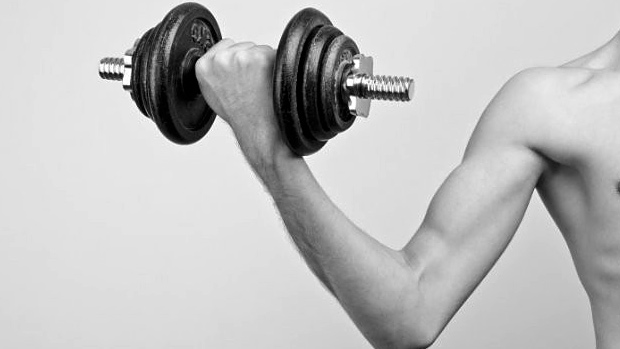Broscience [broh-sigh-en(t)s]: A branch of knowledge or study dealing with the human body's response to strength training, supplementation, or nutrition systematically arranged to explain why one doesn't appear in the mirror as they'd prefer to appear.
Origin: 1970s California, gym locker rooms, and backstage at fitness events.
Do you remember your first time? I surely do. It was in a locker room at the gym. Two guys, one slightly muscular and the other pleasantly round. The slightly muscular guy was telling our round friend to "lift weights for size and do cardio for cuts." I'm sure you've heard that line of reasoning before; it's the most popular type of broscience.
Gymlore, regardless of how much time has passed or how much contrary information has come out, is still widely accepted, practiced, and acknowledged as truth. So, let's deflate some of these hot air balloons, shall we?
"Yo Bro, Try This!"
The food combining theory states that you shouldn't mix carbohydrates and fat intentionally in the same meal. The reasoning behind this is that the insulin spike from the carbohydrates will increase the chances of dietary fat being stored as body fat.
In reality, this is a very myopic view of insulin that doesn't consider the entire meal. I'd never advise a client to consume a high-carbohydrate and high-fat meal together, but there's nothing wrong with having a moderate amount of both at the same time. There's little, if any, scientific evidence to support the theory, and humans have been combining carbohydrates, fat, and protein together for ages and we turned out all right. (Well, some of us at least.)
Most of us who mean business are eating every two to three hours, which means that our nutrients from meal one are still being absorbed when we start to eat meal two. So, the nutrients from our first two meals are acting together anyway, even if we don't intend on it.
Golay, et al. conducted a study looking at a mixed diet versus the food combining theory.(1) Here's what they stated in their results:
"There was no significant difference in the amount of weight loss in response to dissociated (6.2 ± 0.6 kg) or balanced (7.5 ± 0.4 kg) diets. Furthermore, significant decreases in total body fat and waist-to-hip circumference ratio was seen in both groups, and the magnitude of the changes did not vary as a function of the diet composition. Fasting plasma glucose, insulin, total cholesterol and triacylglycerol concentrations decreased significantly and similarly in patients receiving both diets."
There was actually a slight increase in fat loss in the subjects who used a mixed diet. Go figure, right? We tend to focus solely on the insulin response of carbohydrates, when really the insulin response of a carbohydrate and fat meal depends on how saturated the fat is. An unsaturated fat tends to actually lower the insulin response of the carbohydrate, or not affect it at all.
You also have to factor in your caloric intake. If you're in a lower caloric state, the insulin response from a carbohydrate and fat meal can be a glorious thing. If you're eating a ton of calories, then you might want to watch out.
Let me put the nail in the coffin by saying this: If you follow the food combining theory and its rules, you'll have a harder time maintaining stable insulin levels, which is the point of the whole theory to begin with.
Bodybuilding is a fanatical sport because everything is done in extremes. So, it only makes sense that we'd eat different foods when we have different objectives, right? Wrong as the day is long. The line of "clean" and "dirty" foods is so blurred that many a physique has been ruined as a casualty of water.
From a physiological standpoint, there's no difference between "clean" or "dirty" eating, provided that your macronutrients are kept in line with your goals. It's why the cookie-cutter bodybuilding coach that advocates one diet to rule them all often fails. You can take five different dieting bodybuilders and give them five radically different diets and they can all get shredded. It's all about hitting your macronutrient numbers.
I'm not advocating that one should eat a pizza everyday to get ready for the beach – far from it. Let's say that the protein, carbohydrate, and fat amounts in the pizza fit in with your daily allotment. You eat the pizza, and then you're done. What about the rest of the day? You won't have much room left for more fat or carbs; thus, you'll end up wrecking your physique.
Now, I brought up pizza to serve as an example. You can freely eat white rice, white bread, bagels, and pasta daily, as long as they fit into your daily macronutrient numbers.
The most common type of broscience can be found in the days leading up to a bodybuilding event, or even a big day at the beach. Individuals looking to tighten up their midsection will often progressively drop water, while raising carbohydrates throughout the week, until they get to the day of their event when they'd have zero water and ultra-high amounts of carbohydrates.
The fact of the matter is that water is stored in two different areas in the body – intracellularly and extracellularly (inside the muscle and underneath the skin, respectively). The problem with following the cool kids is that the body strictly regulates the intracellular to extracellular balance at a seventy to thirty ratio. If you pull water out of one area (like people try to do with extracellular water), it'll also be pulled out of the other area to keep that seventy to thirty balance.
The ratios don't change; you just get flatter. That is until you have your post-event binge meal and take in copious amounts of carbohydrates and water. You end up looking better the day after the event that you've trained and dieted for during the previous sixteen weeks. Not cool.
This goes hand-in-hand with our previous myth. For some reason, physique athletes are so afraid of what they think sodium might do to their bodies that they put themselves on a path of destruction.
It's true that sodium does make your body hold water. I'm not denying that fact. But that's a rather simplistic view. Your sodium balance affects both fluid and blood volume. Why does that matter? Well, aren't we after a harder and tighter look that depends on both fluid and blood volume? Like the water ratio we mentioned above, the body holds on to its normal range of sodium very strictly.
Your kidneys will either increase or decrease their sodium output depending on your intake. A Harvard study done by Rogacz showed what happens when sodium is restricted over the course of six days.(2) For those who always scream that research studies don't apply to bodybuilders, six days is the typical amount of time that athletes manipulate their intake for a contest or event.
In the Rogacz study, sodium intake was eliminated, but the sodium in the subject's blood stayed the same. By the sixth day, the body had nearly stopped getting rid of sodium. What does this mean? All the sodium manipulations that you did the previous week did nothing! All it did was raise the hormone aldosterone, which causes increased water retention and re-absorption of sodium.
Don't try to trick the body; it's always smarter than we are.
As you can see from the above four myths, the fitness and bodybuilding insider is filled with crazy claims and ridiculous rationale. Your best bet is to stay on top of the information, which you can do by reading T NATION and by practicing and using each new method. That's the only way you'll truly find out what works.
Don't listen to some folklore because the biggest or leanest guy in the gym said so.
- Golay A et al. Similar weight loss with low-energy food combining or balanced diets. International Journal of Obesity, 2000:24 (4)492-496
- Rogacz S et al. Time course of enhanced responsiveness to angiotensin on low salt diet. Hypertension, 1990:15 (4): 376-380





